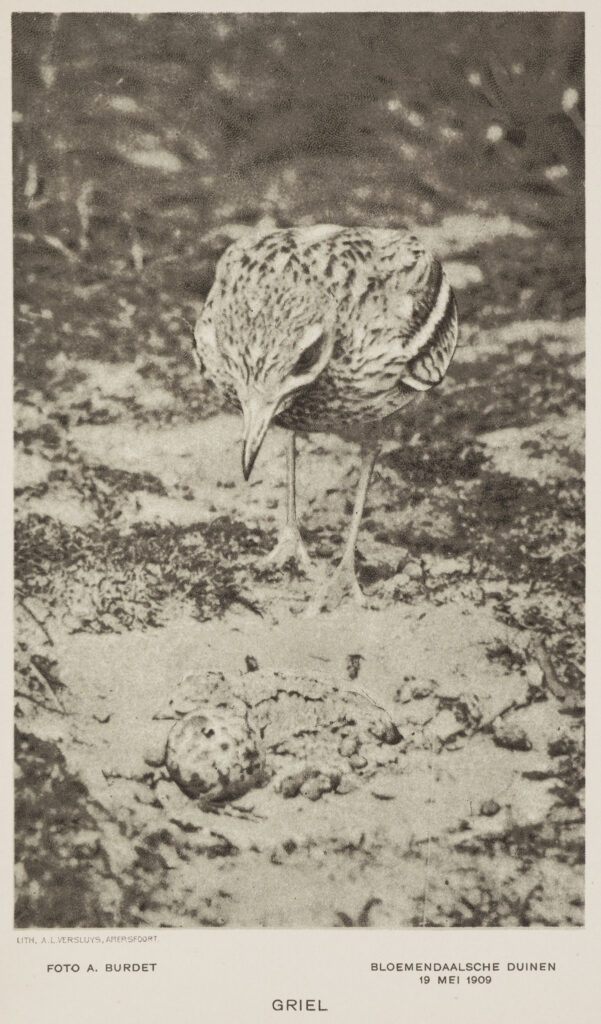A stone curlew near its nest
Source: Het vogeljaar. Nederlandsche vogels in hun leven geschetst / Jac. P. Thijsse, Amsterdam: W. Versluys, 1913, 2e dr.
The renowned bird and nature photographer Alphonse Burdet, a good friend of Thijsse, took this photo of a stone curlew near Bloemendaal that was included in the second edition of Het Vogeljaar (‘Birds throughout the year’).
Jac. P. Thijsse’s extensive writings on his observations of birds, with their detailed descriptions and sometimes lyrical use of language, are unparalleled. One of the birds that Thijsse wrote about in great detail in the second edition of Het Vogeljaar was the stone curlew. Already a scarce breeding bird in the early twentieth century Netherlands, it used to breed in the dunes near Bloemendaal, nearby Thijsse’s house.
Thijsse wrote the following about the stone curlew in 1904: “This is actually a very rare bird in our country, and it may well become extinct here within fifteen years, as it cannot exist without wild dunes or heathlands. In our country, it breeds only in the dunes and perhaps also in the moors and heathlands of Brabant.”
Although the stone curlew endured a little over fifteen years, Thijsse’s prediction was unfortunately correct. Fifty years later, in 1958, the stone curlew was removed from the list of breeding birds in the Netherlands. In that year, the last nest was found in the dunes of De Zilk, near Vogelenzang.
